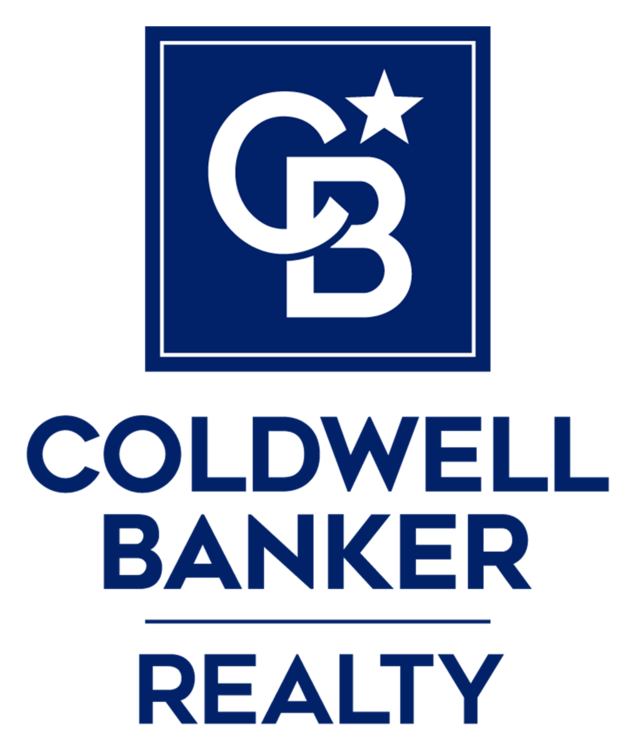Somerset County’s Real Estate Market Conditions August 2020: Get ahead of the residential real estate market drivers in Somerset County, New Jersey, with Coldwell Banker Residential Broker sales associate, Joe Peters. Joe’s monthly report walks people through the economic conditions and trends that influence our local markets. You will come away knowing what is happening, and more importantly, why it is happening. As a result, you will be better informed to make home buying and selling decisions.
What’s Happening in Somerset County’s Real Estate Market?
Based on the last full month’s contract sales, statistics show a meager supply of inventory of ~ two months. Normal market conditions average four to six months in Somerset County. Units going under contract averaged 44 days on the market. Five hundred eighteen units went “under contract” in July, up from 546 in the prior month. Newly listed properties in the same period totaled 417, down a bit up from 435 in the preceding month.
Our total inventory number decreased from 1,356 (last year) to 994 units, nearly 27% less than last year. In contrast, sales were up by almost 32% in July, as we saw the ongoing effect on the Real Estate market as it recovers from the COVID-19 pandemic effect. It is an optimum supply and demand curve for our sellers.
New Jersey Residential Real Estate Market Forcast – August 2020
Because of pent up demand and <3% mortgage rates, we expect strong listings and sales bounce-back in the late summer and fall season.
Looking at consumer behavior, we expect to see fewer, yet steadily increasing listings and more sales compared to last year. Right now, we are still witnessing homeowners restricting the number of showings, and some are hesitant to list because they do not want people in their houses.
Some home sellers and home buyers feel safer with virtual showings. Everyone is taking time to understand and adjust to this new model of virtual selling and buying and the new methodical and safe open-houses. Time will tell if these new approaches have an impact. Thankfully, the listings that are coming on the market sell quickly due to more buyers than sellers.
Somerset County Real Estate Market Inventory Breakdown By Price For Last Month:
| July | July | Total | ||
| Somerset County | New | Under | Active | Months’ |
| Listings | Contract | Listings | Supply | |
| Condos/Town Houses * | 164 | 187 | 342 | 2 |
| Over 55 Communities* | 20 | 21 | 48 | 2 |
| $000K to $199K | 14 | 23 | 31 | 1 |
| $200K to $299K | 65 | 114 | 117 | 1 |
| $300K to $399K | 65 | 119 | 137 | 1 |
| $400K to $499K | 60 | 93 | 121 | 1 |
| $500K to $599K | 58 | 74 | 106 | 1 |
| $600K to $699K | 41 | 41 | 92 | 2 |
| $700K to $799K | 24 | 43 | 74 | 2 |
| $800K to $899K | 26 | 26 | 82 | 3 |
| $900K to $999K | 22 | 15 | 54 | 4 |
| $1,000K and Up | 42 | 33 | 180 | 5 |
| Totals for July | 417 | 581 | 994 | 2 |
| Average Price | $680,558 | $518,537 | -23.8% | |
| Average Days on Market | 44 | |||
| * Included in $ breakdowns |
- 60% of sales in houses < $500,000
- 40% of sales in houses > $500,000
- 06% percent of total sales (or 33 in total) in houses >$1,000,000
Somerset County Real Estate Market Inventory Breakdown By Municipality For Last Month:
| Active Listings | Under Contract | Month’s Supply | |
| Bedminster Twp | 59 | 21 | 3 |
| Bernards Twp | 116 | 59 | 2 |
| Bernardsville | 94 | 23 | 4 |
| Bound Brook | 11 | 15 | 1 |
| Branchburg Twp | 49 | 27 | 2 |
| Bridgewater Twp | 125 | 84 | 1 |
| Far Hills Boro | 17 | 0 | |
| Franklin Twp | 121 | 92 | 1 |
| Green Brook | 28 | 12 | 2 |
| Hillsborough | 80 | 87 | 1 |
| Manville Boro | 10 | 23 | 0 |
| Millstone Boro | 2 | 0 | |
| Montgomery Twp | 94 | 39 | 2 |
| North Plainfield | 28 | 23 | 1 |
| Peapack Gladstone | 15 | 6 | 3 |
| Raritan Boro | 10 | 6 | 2 |
| Rocky Hill Boro | 3 | 2 | 2 |
| Somerville Boro | 16 | 19 | 1 |
| South Bound Brook | 6 | 8 | 1 |
| Warren Twp | 81 | 25 | 3 |
| Watchung Boro | 29 | 10 | 3 |
| Totals | 994 | 581 | 2 |
Two areas had no sales last month:
- Far Hills Boro
- Millstone
One area reported 1 or 2 sales each last month:
- Rocky Hill
Hotspots:
- Bernards/Bernardsville – 82 sales
- Branchburg – 27 sales
- Bridgewater – 84 sales
- Franklin – 92 sales
- Hillsborough – 87 sales
- Mongomery – 39 sales
Hotspot areas equaled 71% of the sales last month. The average new listing coming on the market last month neared $660,558. The average price of a unit going “under contract” neared $518,537 (24% less).
Note: To get a competitive price point on your property based on location and uniqueness, contact me at (908) 238-0118. Coldwell Banker’s big data technology capabilities will give you an advantage. I can show you the latest age and earnings breakdown for your particular area; where people are moving into that area, and how I can market to those specific areas and demographics directly. The result is in you receiving the maximum selling price with a shorter time on the market. Houses priced and marketed accurately sell faster, especially with a real estate industry veteran and local expert, helping you navigate the process.
Why it is happening
New Jersey’s Economic Drivers:
New Jersey Home Sales and inventory levels:
- After record-setting increases in January and February, we saw a more than 50% decline in sales in April and 35% in May over the same months last year.
- But, in June, a large rebound started to take place and it has continued into July where Somerset County actually had 27% less inventory than last year and sold 34% more houses than last year for the same month.
- It looks like the rebound in June and July will help us to actually top the year over year numbers if this trend keeps up.
- At the same time, the total unsold inventory in NJ dropped by 15,500+ homes vs. this time next year (a 42% decline on a statewide basis).
- We have seen some sellers reluctant to list in this troublesome time, but that seems to be reversing itself.
- The current unsold inventory in Hunterdon and Somerset County is two months. This is mostly due to the rapid sales as new inventory comes on the market.
- Hunterdon and Somerset County have about 34% & 27% less inventory than we had a year ago, respectively. This is a big drop. And it is predicted to stay low ad sales outpace listings.
- Decreases in inventory have occurred in all price points with the under $400,000 market seeing the largest drop.
- NJ actually has 26,000 units in inventory this yeas as compared to 42,000 a year prior.
- And, we have seen increases in sales across all price points with the under $400K range seeing the smallest increase of only14%.
Interest Rates:
- Interest rates have been steadily declining over the past few months.
- The economy is adjusting, and average Interest rates are just under 3% for a 30-year conventional mortgage (we are actually seeing rates close to 2.5% in some cases). A fifteen-year conventional mortgage rests at just over the 2.5% mark. Five-year arms are just under the 3% range.
- Mortgages are becoming harder to get based on which industry you are employed in and the new stricter rules being adopted by lenders. This could affect the size of the buyer pool.
- And, mortgage forbearance is causing unforeseen issues in the mortgage market which may cause a drop in the number of funds that are available.
- As said, the last few months have been dropping. Yet, we expect the rates to fall a bit further, giving buyers a once in a lifetime opportunity to buy at rates they probably will not see again.
- We are already using some rates well below 3%.
National Job Front:
- On the national level, the US added over 2,100,000+ in 2019 v. 2,700,000 jobs in 2018.
- US unemployment rate slowed in January, with just 225,000 jobs added. An additional 325,000 were added in February which put the US on pace to add 3 million + jobs in 2020.
- Then COVID-19 appeared and we saw nearly all of the jobs created in the past five years erased.
- We have had nearly 41 million unemployment claims in the last 4+ months alone, pushing unemployment numbers to a peak of around 15%.
- The May end-of-month numbers were expected to be somewhere south of 20%. But, we received a big surprise in that they actually came in lower by 2.5 million claims lowering the unemployment rate to 13.3%.
- Then in June, they dropped another 4.8 million with the unemployment rate dropping to 11.1%.
- And in July, they dropped another 1.8 million in June with the unemployment rate dropping to 10.2%
- This indicated that the recovery was indeed well underway with over 40% of the unemployed now back in the workforce.
- In contrast, the claims have risen over the past two weeks. We are going to have to see July month-end numbers to get a better feel for where we currently are.
- The claims have been falling each week and indicating that the PPP and associated programs are starting to work.
- Fortunately, the economy was very strong going into this, but the effect is devastating and will be long term.
New Jersey Job Front:
- In 2019 NJ added 39,000 jobs once again. NJ added 39,000+ jobs in 2018 as compared to 47,100 for the same period in 2017.
- The NJ unemployment numbers were at 3.5% just five months ago and were just over 10% in April. The May numbers were at around 15.2%. And in June (the last month reported) they rose to 16.6%. It should be noted that at end of month June NJ had only returned 26% of the unemployed to the workforce while the nation as a whole had returned nearly 34%. Not surprising as NJ was one of the states hardest hit by VOVID-19 in the early months of the pandemic.
- The level of jobs created has been at consistently higher levels than in the past several years (a silver lining as these additions to our job market will be able to afford to buy houses eventually).
- But, this too has ended as 1.2 million+ people have filed for NJ unemployment over the past four months
- The NJ unemployment number was 16.6% in June and the first two weeks in July showed improvements to that number.
- Construction, food services, and accommodations are again the leaders in job losses, though more states are now citing pain in retail, wholesale trade, according to the U.S. Department of Labor. Health care, social assistance, and manufacturing are shedding workers, too.
- This will certainly have a huge impact on the buyers market in the balance of 2020.
Rental Market Trends:
- Rental prices in New Jersey rose again in 2019, averaging just over $1,700 per unit. Current vacancy rates in New Jersey have risen to around 4.3% in central NJ. & state-wide.
- The drop in New Jersey’s homeownership contributes to rental demand. A 12+ year trend shows a decrease from 71% to 66%. This 7% decrease compared to an 8% national decrease contributes to the slower recovery of home prices in the state and adds over 20,000+ additional renters in our state. However, the 71% level resulted from the loose lending standards of the early 2000s and is actually at a good level. Households with no children stand at 65%, reflecting the decline in our school population.
- One article states that the average homeowner who is 65+ has an average net wealth of over $318K, while the same for a renter is only just under $8K. It also offers a stable place to live, an evident hedge against inflation, and a way to build wealth (a strong argument for homeownership).
- However, the number of renters has increased by 7% over the past 25 years, with the less educated leading the way. And, we are now seeing more educated millennials moving east into higher rent and cost of living areas that eat into their discretionary income (including savings). It makes one wonder where this all is heading.
- The pace of new rental construction has increased by nearly 5 fold to meet this demand.
- The average rental price in NJ is now over $1700 and the vacancy rate has increased to over 5%. This reflects the ability or confidence to afford these rent prices by a large number of potential renters no unemployed.
New Jersey Foreclosures:
- New Jersey continues to face falling foreclosure rate filings at about 1.9%. Other states have begun to or have already recovered. And, some sets like NY are still much higher with a 2.5% filing number. In a tight real estate market, these foreclosures sell at a small discount.
- The national baseline number sits at a little under 1.2%.
- Foreclosures in NJ in 2018 were the lowest in the state in over four years. And, 2019 was even better with a number of just under 38,000 foreclosure filings (the lowest since 2012). With the first six months in, NJ looks to be on track for an 18,000 foreclosure number in 2020 representing a 54% decline. Obviously, this could change depending on how long it takes workers to get back on their feet from the COVID-19 pandemic.
Real Estate Market Recap
Overall Economic Conditions:
- In early March:
- We were at our longest economic expansion period in America’s history with 125+ months of positive job gains.
- The GDP was still rising (although its rate of increase seems to be slowing a bit).
- And, wages are up significantly at the same time.
- Interest rates have decreased to just under 3.5%.
- Foreclosures rates have almost normalized.
- In April and May:
- We have seen a sharp spike in unemployment
- The GDP has been adversely affected
- Wage growth is Affected.
- Interest rates are bouncing around (but holding).
- Inventory levels are down by 35+% as listings are being withheld.
- Buying activity is also down about 35%
- It was as if someone had hit the “pause” button on the real estate market.
- The balance of 2020 real estate is now under extreme pressure as a result.
- Current Real estate values do not seem to be affected as to the lack of inventory.
- In June and July: Inventory came on the market at a faster pace. Sales picked up at an even higher pace. Inventory dropped as a result and we saw impressive sales numbers. We’re optimistic about 2020. This is a true seller’s market, so let’s add your house to the inventory!
Changes in lifestyle:
- The average age at marriage is now in the mid to late ’30s (up seven years from just a decade ago).
- Families usually have only one to two children due to costs and the ability to choose.
70% of all NJ homes have no children of school age, and 50% do not have more than one person in them. This factor minimizes the need for larger housing not only in NJ but everywhere. - As a result of job opportunities, buyers were gravitating to areas within 15 miles of NYC with good mass transportation systems.
- But, we are already seeing a reversal of the above after the NYC area has become a COVID-19 hotspot as well as social unrest.
- 80% of consumers still perceive homeownership as part of the American Dream. It is just what they want to buy (or rent) that has changed.
- Buyers are not looking for open areas as in the past and gravitating towards more compartmentalization within the home. Also back yare recreation facilities such as pools now have a preference.
- Builders have been thinking larger 4 BR center hall colonials on 1+ acre in the country (based mostly on local building codes).
- Buyers were thinking of smaller luxury hi-rise close to mass transportation and work in the east (truly a mismatch).
- Now, there is an open question of ho9w many workers will gravitate back towards the city as they adapt to the working from home lifestyle.
- 60% of all new housing starts in 2020 in NJ were in the rental sector and, 2020 numbers will surpass that. This is contributing to the lack of new construction.
Market conditions:
- What a difference 4+ months make!
- Consumer confidence is was on pause (at best) until the total effect of the COVID-19 pandemic plays out and is better understood.
- The recent civil unrest has further affected this.
- This was affecting how many listings and new buyers we see during the next few months and surely could have an effect on prices.
- In June and July, we saw a total reversal on the sales side and supply and demand effect as the lack of inventory and high buyer demand keep prices at current levels.
- Most consumers will still see homeownership as a sound investment.
- And, in general, homeowners are sitting with more equity than ever (NJ reports 95+% with positive equity) and are no longer using their homes as an ATM.
- The total effect was obviously helped by our having such a strong economy and real estate going into the pandemic.
- The current seller’s market has resulted.
- Yet people buy and sell homes based on life events. This will not change. Life events will go on.
- And never before seen interest rates will help this situation once it stabilizes.
- We are hoping to see a continued strong spike up as things are better understood, and people get back to a normal life.
- The latest unemployment dips should surly have and effect on the market in June and we are starting to see more listings coming on to the market.
- It seems that the spring market starts to appear more mid-summer and lasts until late in 2020.
Forecast:
- The effect of the COVID-19 pandemic is now seeming to begin to correct itself (at least in our area).
- The economy is starting to recover from the recent drops in the unemployment numbers.
- And this will affect the following:
- Current and future real estate values (including any appreciation in the foreseeable future)
- The amount of inventory available (hopefully we are starting to bottom out at -35%)
- The ability for some buyers to get a mortgage
- There could be more possible foreclosures (this is way out)
- Prime Interest rates have dropped several times in the past months plus additional quantitive easing in order to stimulate the economy and, as of yet have had not had any downward effect on mortgage rates.
- Inventory supply will hopefully start to increase or at best stay low over the next few months.
- But, once we have a stronger confidence level in having things under control, the housing market should have a strong continued bounce-back or upward spike due to:
- The economy and housing market both being very strong going into the current COVID-19 issue.
- Pent up demand and a spring market being pushed out till further in 2020.
- Life events (as mentioned earlier) will still happen. This will drive the pent up demand.
- Lower than ever mortgage rates.
- Due to the COVID-19 and recent unrest in NYC, we are starting to see more interest in living in more suburban counties such as Hunterdon and Somerset.
- Also, people have found that working from home is a reality and we will probably see less commuting as things start to open up once again.
- More attention is being given to horses with pools and less open areas which lend themselves to working and studying at home.
- And’ the local market will have to adapt to the new suburban renaissance of where people will be working from and what they will need in order to adapt to this,
Wow. That is a lot to digest. And it is changing daily, but seems to be heading in the right direction for now. For clarity and understanding, I am always available if you want to talk and better understand how this might affect your particular situation.
Note: Presented as a public service by Joe Peters of Coldwell Banker Residential Brokerage. I took reasonable precautions in presenting this information. Please consult with a professional sales agent and take no actions based on my opinions, gathered trends, and statistics. I assume no liability. You can contact me at (908) 238-0118.




